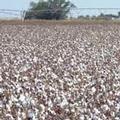 美國有機貿易協會(Organic Trade Association)23日對外公布研究成果,顯示美國境內栽植有機棉花的土地面積呈現連續二年成長。
美國有機貿易協會(Organic Trade Association)23日對外公布研究成果,顯示美國境內栽植有機棉花的土地面積呈現連續二年成長。
種植有機棉花的總面積從2007年的8,510英畝增為2008年的9,279英畝,成長幅度為9%。
依美國聯邦政府法令規定,有機棉在生長時不得使用具有毒性且藥性持久的殺蟲劑,也不能使用合成肥料。此外,聯邦法律也禁止在有機農場使用基因改造種子。
德州有機棉營銷合作社(Texas Organic Cotton Marketing Cooperative)表示,栽種有機棉的土壤,其地力的培養必須以輪作、栽種覆蓋作物、糞肥堆肥等方法來增加有機物含量。另外,則可使用法令允許使用或有條件使用的土壤改良劑與肥料,來調節土壤中的氮、磷、鉀、鈣、鎂等含量、土壤pH值與微量營養素等。作物的養分管理必須接受控管,以評估管理計畫的成效。
相較之下,目前慣行的棉花生產方式大量依賴殺蟲劑與肥料。根據美國農業部最新的資料顯示,以慣行農法種植棉花,每英畝地需使用5.87磅的殺蟲劑、除草劑與除真菌劑。
一個倡導業者與農民密切合作、促使全球有機棉業擴展的非營利組織「有機交易中心」(Oric Exchange)警告,應注意的不僅是殺蟲劑的用量,也應重視殺蟲劑對農村居民的身體健康造成哪些影響。該中心表示:「將殺蟲劑用於棉花會造成許多身體的問題,有些被列為高度危險的藥劑,足以導致身體不適,甚至死亡。」舉例來說,氟樂靈(Trifluralin)是棉花總用量第二多的殺蟲劑,多達350萬磅,而達有龍(Diuron)是用量第三的藥劑。氟樂靈與達有龍皆被美國環保署列為可能致癌的物質。
德州農業部則是只有在農地停用違禁農藥至少三年的條件下,才認可該地生產的作物為「有機作物」。
這份有機貿易協會的研究報告,資料是根據2007年間有機棉農友的訪談,以及德州有機棉營銷合作社提供的種植面積與產量等資料。該研究受訪者共栽種2,590英畝的有機陸地棉(upland cotton),和245英畝的頂級皮碼棉(Pima cotton)。
研究結果顯示,有機棉市場內正發生變化。
從事有機棉業的農民歷經陸地棉平均價格的增幅,從2006年每磅0.85-1.25美元漲到2007年每磅1-1.5美元。
栽種有機皮瑪棉的農夫也經歷了類似的價格成長,從2006年的每磅1.65~2.09美元上漲至2007年的每磅1.05-3美元。
2008年農地收穫的數據尚無法得知。其他研究結果顯示2007年收成有機棉14,025捆,較上一年度8,116捆成長近73%。
U.S. acreage planted with organic cotton increased for the second straight year, according to research compiled by the Organic Trade Association and released today.
The total acres planted in organic cotton grew from 8,510 in 2007 to 9,279 in 2008, constituting a nine percent increase, the study shows.
By federal regulation, organic cotton is grown without the use of toxic and persistent pesticides and synthetic fertilizers. In addition, federal regulations prohibit the use of genetically engineered seed for organic farming.
Soil condition must be fostered primarily by increasing the soil's organic content through crop rotation, cover cropping, manuring and composting, according to the Texas Organic Cotton Marketing Cooperative.
Soil amendments and fertilizers categorized as allowed or allowed with restrictions may be utilized for supplemental sources of nitrogen, phosphorus, potassium, calcium, magnesium, management of soil pH and micronutrients. Crop nutrition management must be monitored to evaluate the effectiveness of the management program.
By contrast, the current conventional cotton production system is heavily dependent upon pesticides and fertilizers. Current data from the U.S. Department of Agriculture indicates that 5.87 pounds of pesticides, herbicides and fungicides are applied per acre of conventionally grown cotton.
It is not only the amount of pesticides that are applied, but also the types of impacts they have on the health and well-being of the people in the rural communities, warns the Organic Exchange, a nonprofit group that facilitates expansion of the global organic cotton fiber supply by working closely with farmers, leading brands and retailers and their business partners to develop organic cotton programs.
"Pesticides used on cotton can cause a number of health risks. Several are rated as highly hazardous, able to cause sickness and even death," says the Organic Exchange. For instance, the pesticide Trifluralin was the second most used on cotton in total pounds, at 3.5 million pounds, while Diuron was the third most used. Both Trifluralin and Diuron are categorized as possible human carcinogens by the U.S. Environmental Protection Agency.
The Texas Department of Agriculture certifies crops as "organic" only if harvest has occurred at least three years after the most recent use of a prohibited material.
To compile the research, the Organic Trade Association surveyed organic cotton farmers in the United States who grew organic cotton in 2007, and combined those results with acreage and harvest figures from the Texas Organic Cotton Marketing Cooperative.
Survey respondents planted 2,590 acres of organic upland cotton and 245 acres of extra high quality organic pima cotton. In 2007, survey respondents harvested 1,716 acres of organic upland cotton and 225 acres of organic pima cotton.
Other survey findings revealed that changes are taking place within the organic cotton market.
Organic cotton farmers saw the range in average price they received per pound increase from between $0.85 and $1.25 for organic upland cotton in 2006 to between $1 and $1.50 in 2007.
Organic pima cotton farmers saw a similar increase in price, ranging from $1.65 to $2.09 in 2006 to $1.05 to $3 in 2007.
Harvest acreage figures for 2008 are not yet available. Other findings show 14,025 bales of organic cotton were harvested in 2007, representing a 73 percent increase over the previous year, when the total number of bales was 8,116.



